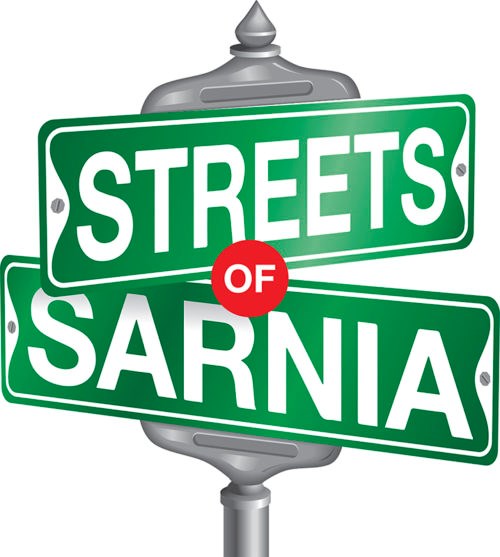The following is an excerpt from The Streets of Sarnia Project, a volunteer project by local researchers Tom St. Amand and Randy Evans, providing explanations for all but a handful of Sarnia’s 700 street names.
Blackwell Road and Blackwell Sideroad, as well as the community of Blackwell, were named for Thomas Evans Blackwell (1819-1863), the first general manager of the Grand Trunk Railway in Canada from 1858 to 1862.
In 1852, the Grand Trunk Railway Company of Canada was formed, with its original charter to build a railway between Montreal and Toronto. That was soon extended east to Portland, Maine, and west to Sarnia. In 1856, the section from Sarnia to St. Mary’s, Ontario, was completed and by 1859 a ferry service was established across the St. Clair River to Fort Gratiot (now Port Huron).
Locally, the rail line ran through Perch Station (Bright’s Grove near Waterworks Road) and Blackwell Station (just west of Blackwell Sideroad) until it followed what is now Cathcart Boulevard into Point Edward. The GTR operated from its headquarters in Montreal, but its corporate headquarters were in London, England. Despite the GTR being one of the factors that pushed British North America into Confederation, the railway was always on shaky ground financially.
By the time it was completed from Sarnia to Montreal in 1860, the GTR was 800,000 pounds in debt to the British banks of Baring Bros and Glyn Mills. A businessman by the name of Edward 46 Watkin was sent from England to reorganize the railway and declared that the GTR was “an organized mess--I might say a sink of iniquity.”
Clearly Watkin was dissatisfied with the performance of Thomas Evans Blackwell, the GTR’s first general manager.
Thomas Blackwell was born in England in 1819 and, when he arrived in Montreal in 1857 to become the vice-president and general manager of the GTR, he had a wealth of experience despite his relatively young age of 38. He had obtained a liberal education and also received a thorough training in mathematics. He had a practical education as well. He trained under his father, John, who was for many years Engineer to the Kennet and Avon Canal Company. When his father passed away, Thomas assumed his position with the company despite being only 21.
His years in Canada saw the GTR expand, but the British investors continually complained about the rising costs. Some even demanded Blackwell be relieved of his position for incompetence; nevertheless, when he retired in 1862, the working staff presented him with a handsome testimonial and a sincere and unanimous regret at his leaving.
When he returned to England, Mr. Blackwell was unfit for work; in fact, he had not long to live. The disease which had slowly been disabling him, chronic inflammation of the membranes of the spinal cord, proved to be fatal, and, in his remaining months, he was more or less an invalid. A post-mortem examination showed the disease to have been both severe and long-lasting. Physicians speculated then that the suffering he incurred in a railway accident in 1851, combined with the stress and tension of his job, aggravated his condition. Undoubtedly, Blackwell had suffered immense physical pain during his years in Canada.
Before he died, he got his wish to visit Egypt. He spent some time in Rome and in Naples, but his weak condition cut the trip short. He took to his bed on the second day after he returned home and died on the 25th June, 1863. He was 45.
What is Thomas Evans Blackwell’s legacy? He was known to be a kind and generous soul with an enterprising disposition and an extremely high intellect. He had a scientific curiosity and expertise, and his scientific achievements were many, including the invention of an improved aneroid barometer. One of his sons, Kennet William, rose to prominence by becoming the 47 GTR’s mechanical superintendent of the line between Toronto and Montreal. Kennet was dubbed the “steel man” by the Montreal Star, for he was the most prominent figure in building the steel casting industry in Canada.
The original Blackwell Station, located a hundred metres west of Blackwell Sideroad, was destroyed in a fire in 1877, and passenger service was discontinued in 1952. At the site of Blackwell Station today are a bench, a plaque and stands of lilacs brought by early settlers to the area. (Kennet; Mathewson, George. “Blackwell; Thomas Evans) Please see Appendices
- Randy Evans and Tom St. Amand
